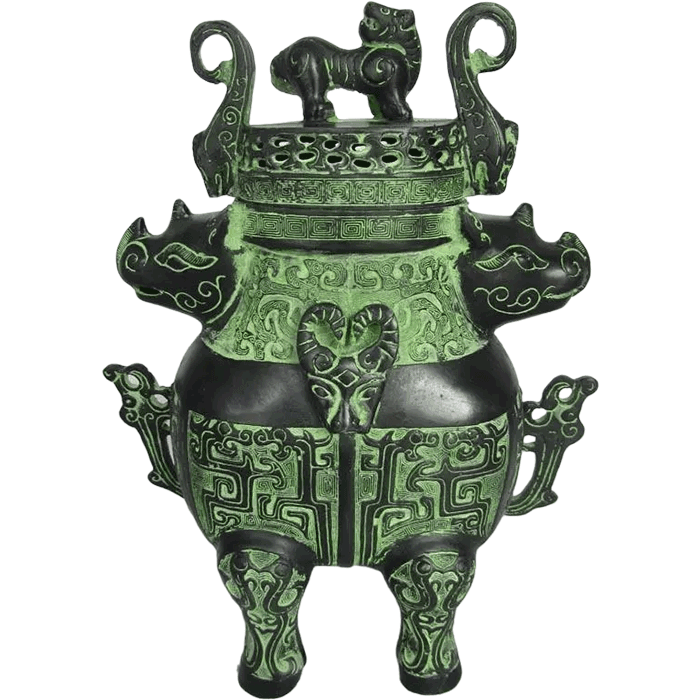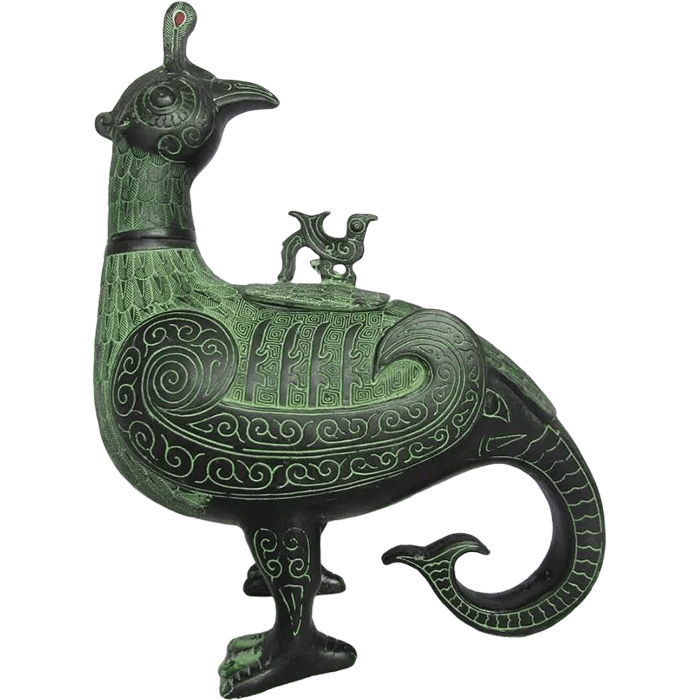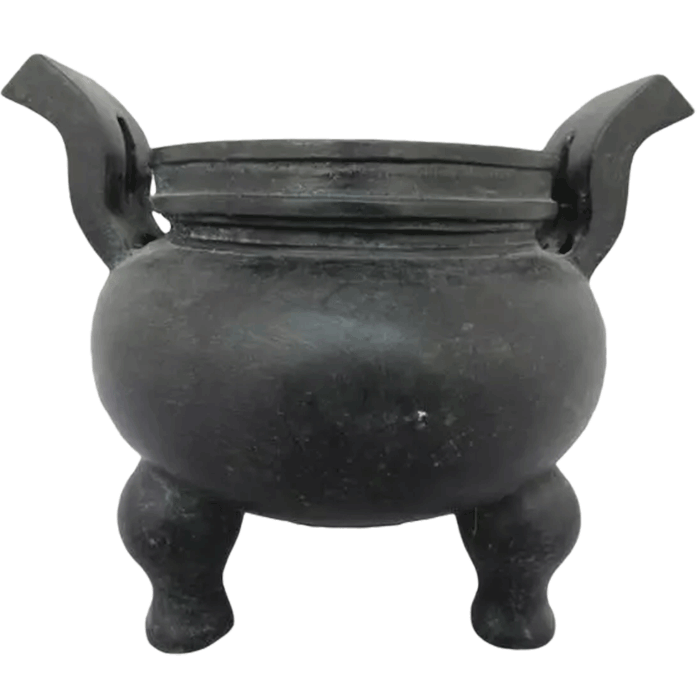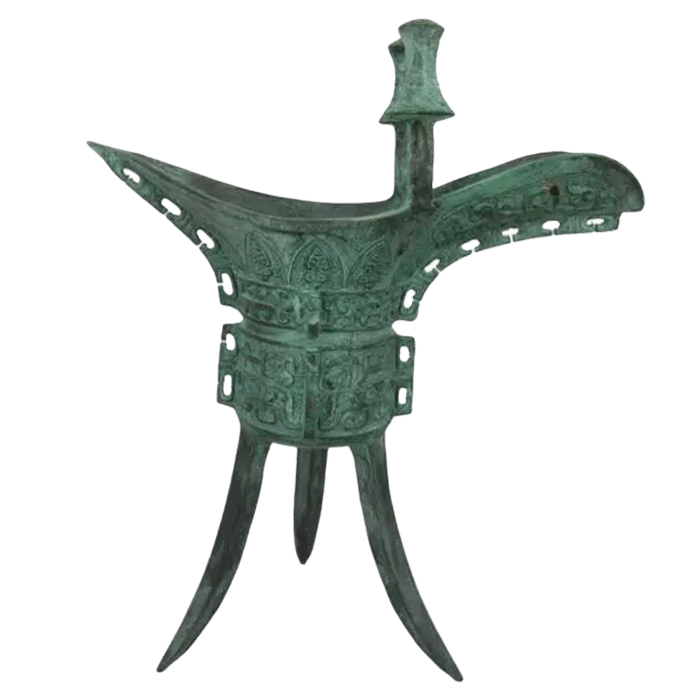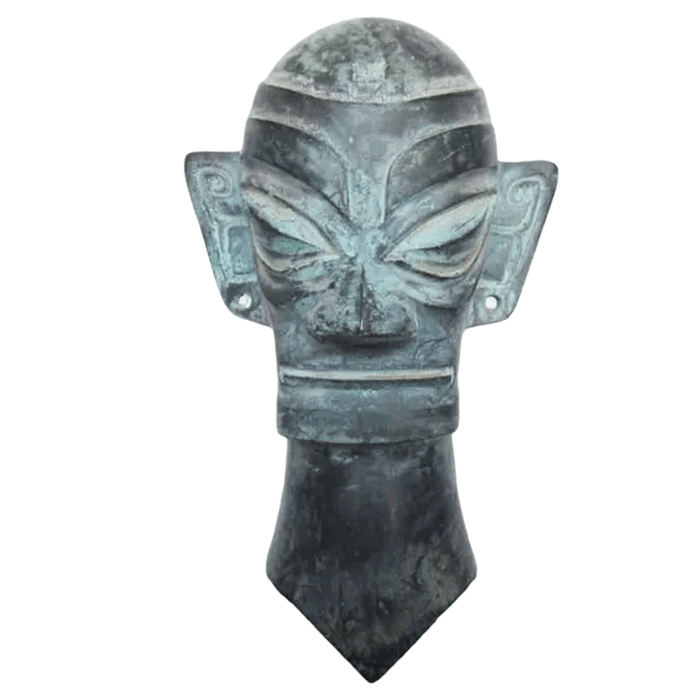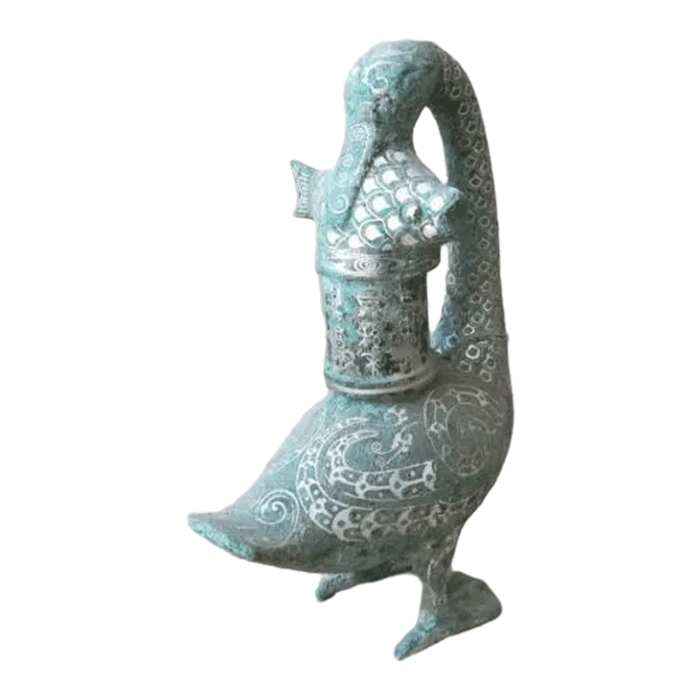several bronze mirrors
Bronze Mirror with Figures Playing Cu-ju
On the back of this mirror is a scene in high-relief, depicting four male and female people playing a Cu-ju game: the woman, with her hair worn in a topknot, is kicking a football, while the man, wearing a scarf and leaning forward, seems to be playing defence. Two other people are watching. The scene is very vivid.
Cu-ju originated very early in our country. According to the records of “Shi Ji” (Records of the Grand Historian) and “Zhan Guo Ce” (Strategies of the Warring States), Cu-ju was very popular in the capital of Qi State, Linzi, as early as the Warring States period. In the Han and Tang dynasties, this sport began to flourish, which is recorded in historical books, Tang poetry and other literary works. In the Song Dynasty,Cu-ju developed greatly with the development of the commodity economy and the expansion of the citizen class. The craftsmanship of the ball was greatly improved, from originally stitched by six to eight pieces of sharp leather tostitched by ten to twelve pieces of cowhide. It is stuffed with a gas-filled animal bladder. The ball became rounder and easier to control and kick up. The sport became more entertaining.Cu-ju in the Song Dynasty began to develop in the direction of juggling. It became popular among the wider population: from emperors and officials to citizens, regardless of ageand gender, people all enjoyedCu-ju. With the popularization of Cu-ju, there were also specialized football clubs at that time. For example, the “Qiyun Club” and “Yuan Club” recorded in the history books had strict rules and taught specialized Cu-ju skills and moral norms. There are also special sports venues for Cu-ju lovers in the city. Some large banquets and store promotions are often accompanied by Cu-ju performances. At that time, there were also many “stars” known for their high level of skills. For example, the names of five masters such as Fan Lao'er were recorded in “Wu Lin Jiu Shi” (Old Tales in Society). There are also many existing cultural relics about Cu-ju scenes in the Song Dynasty. For example, the National Museum of China and Hunan Provincial Museum both preserve bronze mirrors with patterns depicting Cu-juscenes from the Song Dynasty, and there are also porcelain pillows depicting Cu-juwith women and children in the Song Dynasty.
Bronze Mirror with Design of Traditional Lotus-like Flowers
The mirror is in the shape of a petal. On the back is a knob surrounded by designs of lotus-like flowers called Baoxianghua, which differ greatly in shape. During the flourishing period of Tang Dynasty, floral designs became the main theme in mirror decoration instead of just being embellishments. The use of decorative designs of lotus-like flowers, auspicious flowers and pearl-like flowers made the artistic styles of Tang mirrors become more diversified. The themed designs and decoration of Tang mirrors completed its evolution from auspicious beasts to birds and then to floral designs.
Bronze Mirror with Four Phoenixes Design
On the back of the bronze mirror, there is a button in the middle. The button is decorated with four auspicious clouds, a phoenix and a flying dragon. The mirror is surrounded by bead patterns at the edge. In addition, the words "Qian Tong Qi Nian" and "Du You Yuan Guan Ya" are inscribed on its surface. The word "Qian Tong Qi Nian" indicates that it was made in the 7th year of Qiantong Reign (1107 AD). The inscription "Du You Yuan Guan Ya" states that it was made under the supervision of feudal official in Liao Dynasty.
Sculpmart is a professional bronze art and bronze wares manufacturer providing Chinese Bronze Handcraft arts which will allow you to have a chance to own a masterpiece of Chinese bronze sculptures. If you like, you may choose the style to customize, send us the image and design, our craftsman will reproduce and cast a perfect bronze ware for you.


